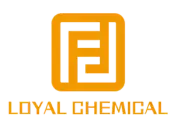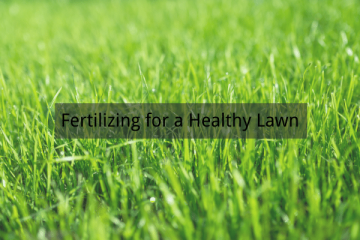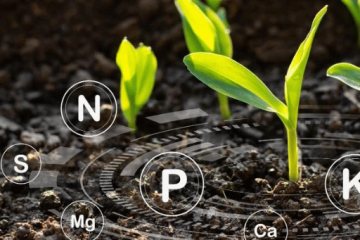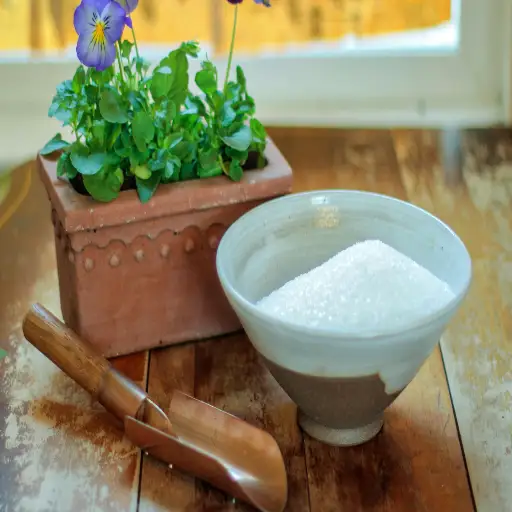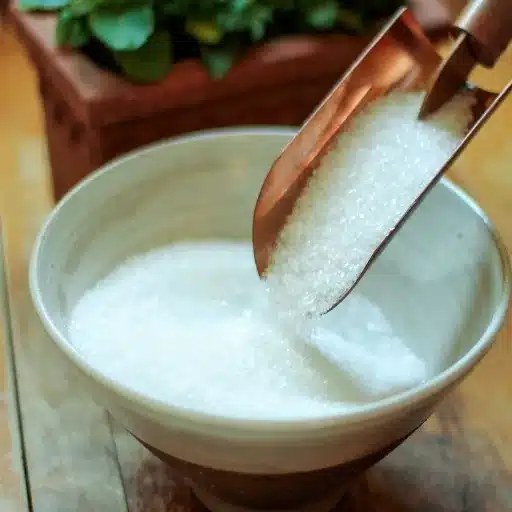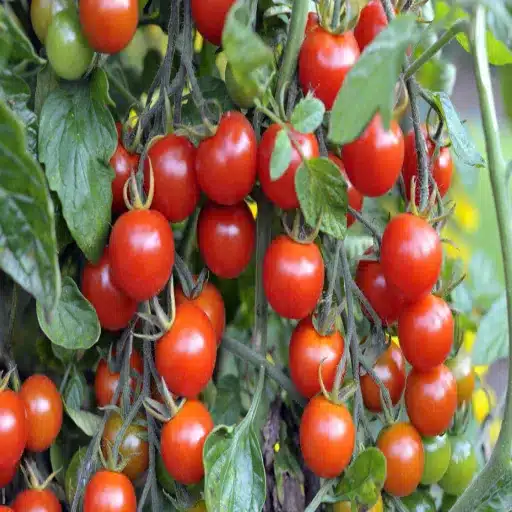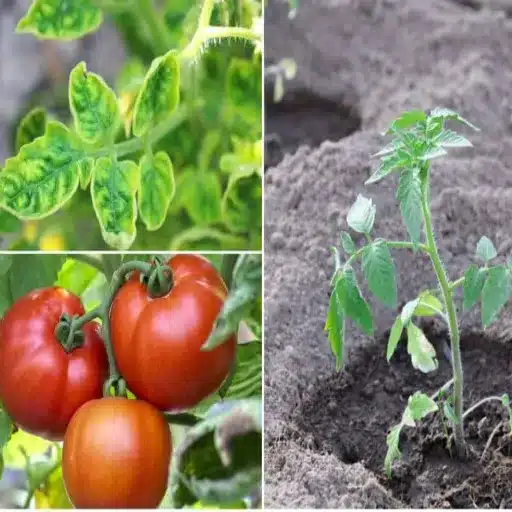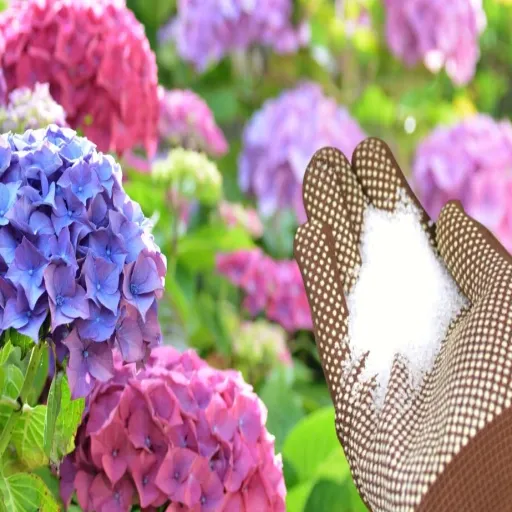Gardening enthusiasts and professionals alike are constantly seeking ways to enhance plant health and optimize growth. Epsom salt, a naturally occurring mineral compound composed of magnesium and sulfate, has gained significant attention as a versatile and cost-effective solution for improving the vitality of plants. This guide will explore the science behind Epsom salt’s benefits, detailing how its unique chemical composition can address nutrient deficiencies, enhance photosynthesis, and promote overall plant development. Whether you are tending to flowers, vegetables, or shrubs, understanding how to effectively incorporate Epsom salt into your gardening routine can be a game-changer for achieving lush, thriving landscapes.
What is Epsom salt and how does it differ from table salt?
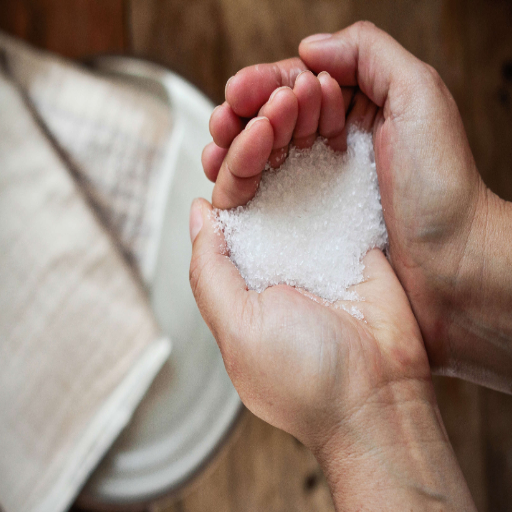
Comparing Epsom salt to table salt: Key differences
Epsom salts (magnesium sulfate – MgSO4·7H2O) and table salts (sodium chloride – NaCl) have a great difference in usage as well as their chemical components. The chemical components of salts differ; table salt is made purely by sodium and chloride ions whereas Epsom salt contains magnesium, sulfur, and oxygen.
Epsom salt is hydrophilic which makes it easier to dissolve in water. The resultant compound is enriched with magnesium and sulfate ions which are good for soil and plant growth. In contrast, table salt dissolves in water to form sodium and chloride ions which can be detrimental to plants in large concentrations since it prevents proper water uptake which leads to osmotic stress.
The uses of both salts also vary. While Epsom salt is popular in gardening, agriculture, and even therapeutic muscle relaxer baths, table salt is predominantly for cooking and preserving food because of its antibacterial properties.
The comparison between the physical characteristics is equally interesting; the crystals of Epsom salt are bigger and less uniform than the finer, cubic crystals of table salt. Furthermore, Epsom salt crystals have a density of 1.68 g/cm3 which contrasts table salt’s density of approximately 2.16 g/cm3. This is another scientific distinction in the structure and usage context.
Why Epsom salt is safe for plants while table salt isn’t
Epsom salt (magnesium sulfate) is a plant-friendly salt due to its magnesium (Mg²⁺), sulfur (SO₄²⁻) content, and solubility which are essential but do not cause damage to the soil or roots. Magnesium is necessary for chlorophyll production and energy movement in a plant, while sulfur helps in protein synthesis, all essential for a healthy plant.
Salt Table is harmful to crops as it adds sodium ions (Na⁺) and chloride ions (Cl⁻) into the soil which is ultimately sodium chloride. Sodium is detrimental since it interferes with the soil’s nutrient economy, osmotically stressing the plant’s roots, making soaking up water exceedingly difficult. Plus, chloride ions tend to restrict themselves to hazardous concentrations, embedding themselves in plant cells and tissues which end up crushing photosynthesis.
- Nutrient Supply: Vital Mg²⁺ and SO₄²⁻ that support plant physiology at appropriate levels is made available by Epsom salt.
- Epsom salt Solubility: Much like table salt it boasts high water solubility, about ~70 g/100mL at 20 °C. However, table salt has its disadvantages, which are in the form of sodium imbalance.
- Toxicity Threshold: Table Salt’s toxic and harmful concentrations are at an astounding 70-75 mg/L levels, which are soluble in poorly drained soils.
Lastly, due to its certain ion composition, Epsom salt is more suitable for agricultural practices, while table salt is more inclined to cause soil erosion and is harmful to crops.
How can Epsom salt benefit garden plants?
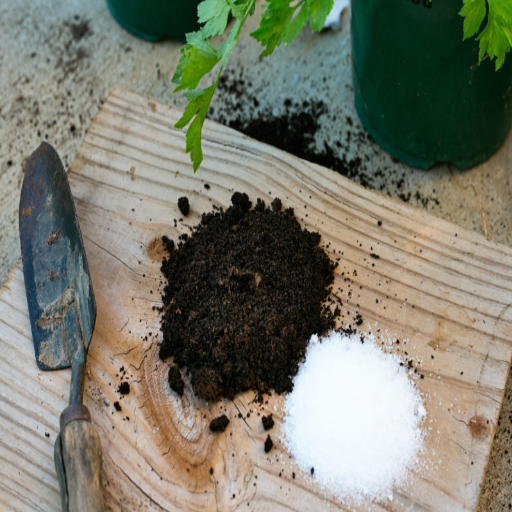
The role of magnesium and sulfur in plant growth
Inadequate supply of magnesium and sulfur can hinder the growth of plants. However, both of them assist in unique ways for the physiological functions of the member. Chlorophyll contains magnesium as its central atom, hence, it uses it to capture light energy during photosynthesis. Magnesium deficiency may lead to the phenomenon of interveinal chlorosis in older leaves as magnesium sustains younger tissues. The nutrient magnesium helps in the optimal growth of plants and therefore its concentration in the soil should ideally range between 25 to 50mg/L.
In the same way, sulfur is also required when it comes to the synthesis of important components such as amino acids, enzymes, and proteins. It is an integral part of the compounds cysteine and methionine which in turn aid in controlling metabolism and regulating growth in plants. Sulfur when in deficiency, generally leads to the yellowing in young leaves. In tissues, sulfur is not highly mobile, and therefore to get sufficient availability, sulfur concentration in the soil should border around 10-20mg per liter depending on the species.
Magnesium and sulfur deficiencies can be resolved if Epsom Salt, also known as magnesium sulfate is used. This salt dissolves easier in water, which helps deliver magnesium and sulfur in a form that can be absorbed quickly. Furthermore, Epsom salt contains 12.9% sulfur and 9.8% magnesium needed by the plant, and for greater accuracy, Epsom salt allows precision in nutrient supplementation.
Improving chlorophyll production and photosynthesis
Chlorophyll and Photosynthesis are reliant on the supply of their critical nutrients, which also include nitrogen, magnesium, and iron. Iron is an essential part of chlorophyll while Magnesium is the centerpiece of the chlorophyll head structure, which takes part in photon absorption during photosynthesis. On the other hand, hema is required for the formation of chlorophyll and electron transfer in the photosynthetic pathway.
- Nitrogen (N): Concentration in plant nitrogen tissues is ideally between 3-5% of dry weight. Lack of nitrogen results in chlorosis which is a symptom underlying an insufficient amount of chlorophyll.
- Magnesium (Mg): A minimum level of 100-200 mg per liter in the root zone is recommended to facilitate availability. Interveinal chlorosis, a sign of magnesium deficiency, reduces photosynthetic activity of the plant.
- Iron (Fe): EDTA and DTPA chelates are prolific in bioavailable form at concentrations from 01-5 mg per liter of nutrient solutions. With iron deficiency, the new leaves are chlorotic as a result of insufficient chlorophyll.
Adequately managing these would ensure continuous chlorophyll synthesis, enabling the plant to be more photosynthetically active and healthier as a result.
Enhancing nutrient uptake and fertilizer effectiveness
Soil pH, nutrient status, and root condition are central to improving proper nutrient uptake and maximizing fertilizer use efficiency. First, I would make sure that the soil pH is within the acceptable limits for nutrient absorption which is between 5.5 to 7.0 for most crops. A pH below 5.5 or above 7.0 can greatly limit the bioavailability of essential macronutrients like nitrogen, phosphorus, and potassium.
Regarding applying fertilizers, I would also concentrate on the specific needs of the crop and the different stages of development. For example, in the vegetative stage, nitrogen needs to be applied often while phosphorus is crucial during root growth and flowering. To some extent, routine analysis of soil and plant leaf tissues enables me to fine-tune the inputs.
Lastly, proper aeration and reduction of compaction are very important to improving the health of the root system. This is achievable through proper irrigation management which incorporates the use of mycorrhizal fungi inoculants to improve the symbiosis between roots and nutrients. Through these approaches, I can maximize the effectiveness of fertilizers while ensuring the healthy sustainable growth of plants.
Which plants benefit most from Epsom salt application?
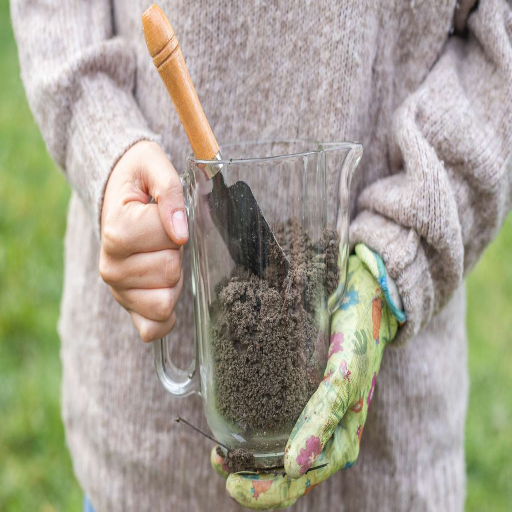
Identifying plants prone to magnesium deficiency
Plants that are particularly sensitive to missing out on magnesium are tomatoes, kale, spinach, various peppers, and roses. These species normally show greater red flags for lack of magnesium during growth and after the fruits have been set. Symptoms of magnesium deficiency are most commonly noted as chlorosis in older leaves, which is a yellowing of the regions between leaf veins, while the veins remain green. This is attributed to the fact that magnesium is a major constituent of chlorophyll, which assists in maximally absorbing light during photosynthesis.
- pH range: Acidic soils of pH less than 5.5 are less favorable in terms of the availability of magnesium. Continuous monitoring of soil is necessary to ensure that the pH range of 6.0-7.0 is maintained for best nutrient absorption.
- Calcium: Magnesium ratio. Higher quantities of calcium or potassium in soil can inhibit the absorption of magnesium through plant roots. To achieve a significant reduction of magnesium’s antagonistic effects on calcium, an ideal soil Ca: Mg ratio of approximately 5:1 is suggested.
- Sandy Or Light Soils: These soils have low cation exchange capacity (CEC) and, hence, are high in leaching of magnesium and other nutrients.
One method of combating the lack of magnesium is incorporating magnesium sulfate Epsom salt at a dose of one tablespoon per gallon of water for spraying on the leaves or mixing it with soil at the time of planting. These specific measures guarantee the by-correction and overuse of measures.
Best flowers and vegetables for Epsom salt treatment
The application of Epsom salt, or magnesium sulfate, works particularly well on certain flowers and vegetables. Based on my practice, the following plants benefit from Epsom salt application due to its high nutrient requirements.
- Tomatoes: Magnesium deficiency is rather common among people suffering from polymers, and it is often manifested as yellowing leaves between veins. Foliar application of Epsom salt (1 tablespoon for a gallon of water) as a spray is recommended biweekly when the crops are in the growing period. This increases the magnesium nutrition of the tomato plants.
- Peppers: Similar to tomatoes, nitrogen-deficient peppers respond well to magnesium. For a more vigorous response, 1 tablespoon of Epsom salt should be added to the soil around the base of the plant weekly.
- Roses: With Epsom salt application, the blooming and foliar quality of roses is markedly enhanced. For roses that are already established, 1/2 cup of Epsom salt can be incorporated into the soil around the base of the plants or 1 tablespoon to a gallon of water for foliar application.
- Leafy Greens: These crops are very sensitive to magnesium deficiency which hinders their growth. To correct this deficiency, dissolve 1 teaspoon of Epsom salt in water and use it during watering every three weeks.
- Houseplants: A light dose of salt (1 teaspoon for a gallon of water) can be used as a spray for potted plants as a magnesium booster, increasing plant vigor.
A notable aspect of magnesium’s importance is supporting the synthesis of chlorophyll and its role in nutrient translocation. Relating to this application, it is necessary to point out that too much Epsom salt can be harmful as too much magnesium can make the balance of other nutrients in the soil too difficult. As a rule, plants should be observed closely, and in case, intervention is justified, soil samples should be analyzed first.
How to properly use Epsom salt in the garden
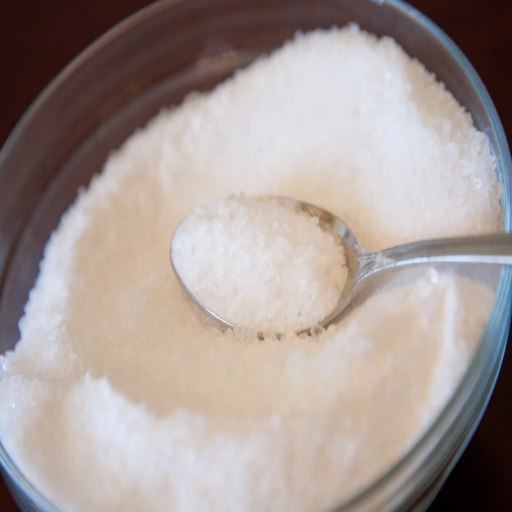
Correct dosage and application methods for different plants
As with any chemical compound, Epsom salt has to be dosed according to the type and need of the plant, as well as the soil condition. In general, follow the instructions below:
- Vegetables: On a normal growing season, moderately magnesium-intensive plants such as peppers, beans, and especially tomatoes will benefit from having Epsom Salt Applied to the soil every four to six weeks, dissolved in water at a ratio of 1 gallon for each tablespoon of Epsom salt.
- Houseplants: In a ratio of 2 tablespoons of Epsom salt for 1 gallon of water, it should be applied roughly once a month. Be careful of over-fertilization, and monitor for leaves losing color and dropping off.
- Roses: Disolving 1/4 cup of Epsom salt in the water will have beneficial results on flowering and vegetative growth rate when applied once every three or four weeks through foliar feeding. Epsom salt can also be dosed directly into the soil during spring to replace some of the water used in flower feeding.
- Lawns: Roughly 3 pounds of Epsom salt can be dosed into every 1,250 feet of lawn and fed directly into the soil, then covered with water to encourage better growth.
- Fruit Trees: Apply 1/2 a cup of Epsom salt diluted in water per mature tree every three to four months. This assists in improving fruit yield and increases overall vigor in species like citrus or stonefruit trees.
These recommendations ought to be followed with a careful observation of the specific plant and adjusted accordingly. Soil testing is ideal for finding out if magnesium supplementation is needed as well as other nutrient imbalances that may worsen growth. Over-application might risk salt build-up in the soil which might adversely affect the root health and the uptake of nutrients.
Mixing Epsom salt with water for foliar spray
Creating an effective foliar spray using Epsom salt requires that the mixture is prepared and administered perfectly. Mix one tablespoon of Epsom salt with one gallon of water. Mix the solution well to prevent clogging the spray nozzle. For best results, spray the solution in the early morning or late afternoon when temperatures are lower. This minimizes evaporation, helping the plant leaves absorb the nutrients better.
- Concentration: Applying 1 tablespoon per gallon maintains a good balance, ensuring there is enough magnesium while also preventing the leaves from burning due to excess salt concentration.
- Frequency of Application: During the active growing season, apply the spray once every 2 to 4 weeks depending on the magnesium deficiency level that is detected in the plants.
- Optimal Weather Conditions: Applying in direct sunlight or in the rain which could dilute and wash out the solution before it has the intended effect should be avoided.
Keeping track of the plant’s response after each application ensures that the right quantity and interval are maintained, helping avoid oversaturation or damage to the foliage.
Can Epsom salt replace traditional fertilizers?
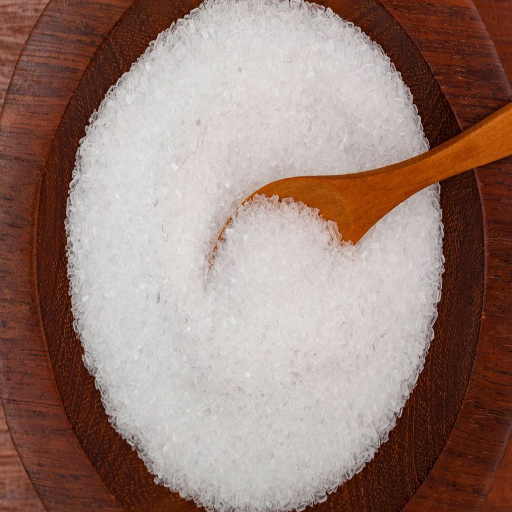
Understanding the limitations of Epsom salt as a fertilizer
Although Epsom salt has a valid use as a magnesium and sulfur source when supplementing plants, it can never fully substitute regular fertilizers. Epsom salt is deficient in key macronutrients necessary for vigorous plant growth and development such as nitrogen (N), phosphorus (P), and potassium (K), making it only a partial source of nutrients. However, these nutrients are vital for processes like photosynthesis, root growth, and fruit-bearing, and are readily available in most balanced fertilizers.
- Nutrient Content: Epsom salt is composed entirely of magnesium (Mg) and sulfur (S) approximately at 9.8 percent and 13.0 percent – the only form of nourishment available, no NPK components are present.
- Use Case: It is advisable only for use in magnesium or sulfate starvation and must be used in conjunction with other fertilizers to obtain complete nutrition.
- Application Rate: The 1 tablespoon per gallon offering, as a foliar spray, or 1/2 cup per 100 square feet as soil amendment ensures moderation is maintained when delivering these supplementary nutrients to plants without overwhelming the concentration of salt.
Shifting the focus to its downsides allows me to employ Epsom salt in the formulation of an integrated nutrient management plan catering to the specific requirements of the plants while ensuring other macronutrients are meted out through primary sources of fertilization.
Combining Epsom salt with other nutrients for optimal results
Whenever I mix Epsom salt with other nutrients, I always ensure that it does not disrupt the general nutrient balance. To achieve the best possible results, I evaluate the plant’s requirements as well as the condition of the soil. For instance, if magnesium or sulfur is lacking, one may apply Epsom salt in conjunction with an NPK fertilizer.
- Application And Ratios: For foliar application, I usually use a ratio of 1 tablespoon of Epsom salts per gallon of water, and for soil, I use half a cup for every 100 square feet. These rates mitigate the risk of over-salinization while achieving the intended nutrient goals.
- Epsom salts are compatible with: Because Epsom salt does not contain nitrogen, phosphorus, or potassium, I combine Epsom salts with NPK-containing fertilizers to formulate an all-inclusive diet. For example, Epsom salts can be utilized with a fertilizer that has a 10-10-10 NPK ratio for more complete growth.
- pH Balance Monitoring: I check to make sure the soil pH keeps within the optimum range (usually 6.0–7.0 for most crops) since too much acidity or alkalinity in the soil tends to restrict magnesium uptake.
By integrating Epsom salt thoughtfully and based on observed deficiencies, I tailor a nutrient management plan that promotes plant health and improves growth outcomes. This combination primarily supports magnesium and sulfur availability while relying on complementary inputs for broader macronutrient needs.
Reference sources
Frequently Asked Questions (FAQs)
Q: Is Epsom salt good for plants?
A: Yes, Epsom salt can be good for plants in many cases. It contains magnesium and sulfur, which are important nutrients for plant growth. Epsom salt (MgSO4) can help plants that are suffering from low magnesium levels, improve seed germination, and enhance overall plant health. However, it’s important to remember that Epsom salt should only be used when necessary and not as a routine fertilizer.
Q: How do I add Epsom salt to my plants?
A: There are several ways to add Epsom salt to your plants. You can dissolve 1-2 tablespoons of Epsom salt in a gallon of water and use it as a foliar spray or soil drench. For transplanting, you can put a handful of Epsom salts in the hole before planting. For established plants, sprinkle Epsom salt around the base of the plant and water it in. Always follow recommended dosages, as too much can harm plants.
Q: Which plants benefit most from Epsom salt?
A: Many plants can benefit from Epsom salt, especially those that require higher levels of magnesium. Some plants that respond well to Epsom salt include tomatoes, peppers, roses, potatoes, and leafy greens. However, it’s crucial to test your soil before applying Epsom salt, as not all plants need additional magnesium.
Q: Can Epsom salt help with seed germination?
A: Yes, Epsom salt can help with seed germination. The magnesium in Epsom salt strengthens cell walls and helps seeds absorb nutrients, potentially leading to improved germination rates and stronger seedlings. To use Epsom salt for seed germination, mix 1 tablespoon of Epsom salt per gallon of water and use this solution to water your seeds.
Q: How often should I use Epsom salt on my plants?
A: The frequency of Epsom salt application depends on your plants’ needs and soil conditions. Generally, for most plants, applying Epsom salt once a month during the growing season is sufficient. However, it’s essential to monitor your plants and soil closely. Overuse of Epsom salt can lead to magnesium buildup and potentially harm your plants. Always test your soil before repeated applications.
Q: Are there any plants that Epsom salt can harm?
A: While Epsom salt is beneficial for many plants, it can be harmful to some. Plants that prefer acidic soil, such as rhododendrons and azaleas, may not respond well to Epsom salt as it can raise soil pH. Additionally, plants growing in soil already rich in magnesium may be negatively affected by additional Epsom salt. It’s crucial to know your soil composition and your plants’ specific needs before applying Epsom salt.
Q: Can Epsom salt replace regular fertilizer?
A: No, Epsom salt should not replace regular fertilizer. While Epsom salt provides magnesium and sulfur, it lacks other essential nutrients that plants need, such as nitrogen, phosphorus, and potassium. Epsom salt should be used as a supplement to address specific deficiencies or to give an occasional boost to plants. A balanced fertilizer is still necessary for overall plant health and growth.
Q: How can I tell if my plants need Epsom salt?
A: Signs that your plants might benefit from Epsom salt include yellowing leaves (chlorosis) while the veins remain green, stunted growth, and curling leaves. However, these symptoms can also indicate other issues. The best way to determine if your plants need Epsom salt is to test your soil for magnesium levels. If the test shows low magnesium levels, then adding Epsom salt may help your plants. Always consult with a local gardener or extension office for specific advice.
